
by Larry Williams | Aug 4, 2022
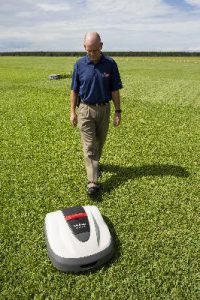
Dr. Bryan Unruh with robotic mower. Credit: UF/IFAS
With gas prices increasing, there are practical ways to reduce gasoline use in your own backyard.
There are electric, battery, solar powered and robotic (autonomous) lawnmowers. Do you remember the non-motorized reel mower? Or, you could use sheep. But, for the time being, most people have gasoline powered mowers. There are costs involved with mowing, including the cost of gas or diesel fuel.
Be smart as to where you grow grass. Use grass where it serves a purpose. Concentrate your efforts in growing grass where it will grow. It’s normal for lawns to decline in close proximity to large trees. As a lawn gives way to tree competition, do something else in that area. Use mulch under trees or plant shade tolerant plants.
Fertilize smart. Lawns need fertilizer. But, too much fertilizer, particularly too much nitrogen, results in excessive grass growth that requires more mowing.
Many homeowners overdo it with too much nitrogen and too little potassium. Fertilizers with the correct ratios of nitrogen to potassium will produce the right balance of shoot to root growth. Choose a fertilizer such as 15-0-15 or some similar analysis with some slow release nitrogen. Fertilize to produce adequate growth and the correct color. If your lawn is a healthy green and you’re mowing, mowing, mowing… why add more fertilizer?
Centipedegrass and bahiagrass will grow best with fewer problems when fertilized sparingly. This would be one or two light applications of fertilizer per year, or none at all if these grasses are performing well. St. Augustinegrass and zoysiagrass might get by on one spring application; however, it’s more common to apply a second time during summer.
Never apply more than the recommended amount of fertilizer per application. You can always split the total amount into two or more applications, which will produce more even growth and minimize sudden growth spurts.
Though it’s a popular practice, reconsider overseeding your lawn with ryegrass this fall. Weigh the desire to have a green lawn through winter with the extra time and costs (gas, fertilizer, water and pesticides) involved with maintaining it.
Finally, keep your gas-powered lawnmower in good working condition. It can make a difference in how efficiently it operates. Make sure the equipment is clean. Change the oil if needed. Replace or clean the air filter and spark plug. Keep lawnmower blades sharp. Basically, follow the owner’s manual for routine maintenance.
Implementing these ideas can help conserve fuel and result in a healthier lawn.
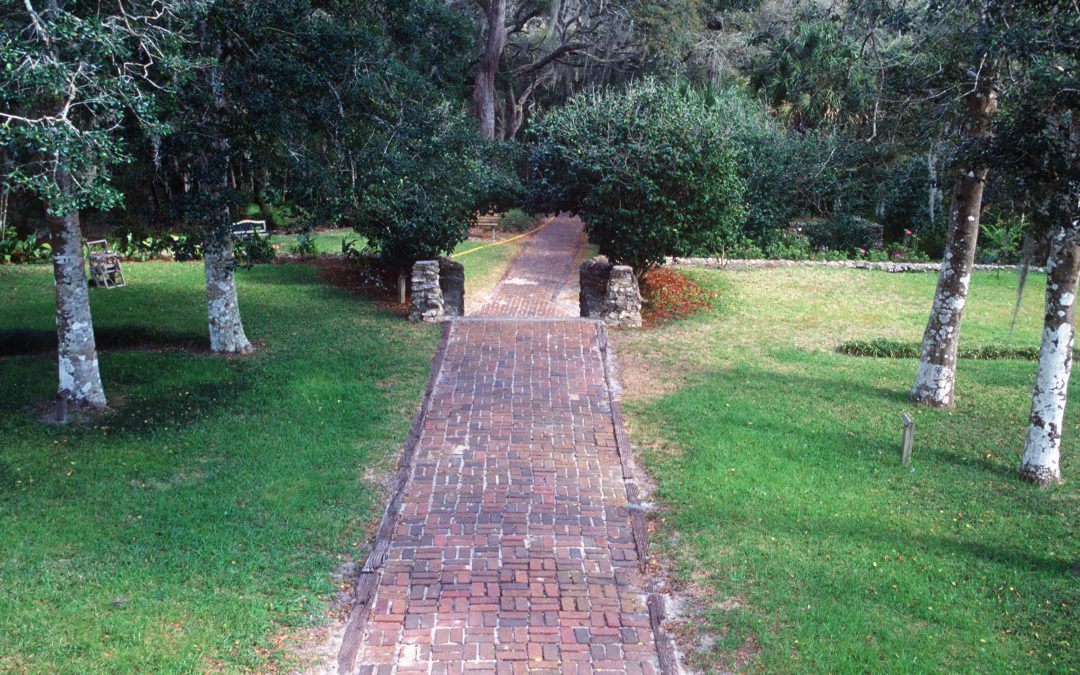
by Joshua Criss | Jun 2, 2022
The lawn is a staple when you picture the typical American home. It is where your kids play, where you stand to associate with your neighbors and the first impression you give to passers-by. It has also no doubt been a subject of frustration as you notice brown patches or open spots. Could this situation have been avoided in the first place? Lawn care is a topic we address in extension extensively. Proper maintenance practices will help your lawn be green and healthy providing you with years of enjoyment. Below are a few principles that if applied will help you avoid issues and grow a worry-free yard.
First Steps
Before you do anything else you will need to know what species you are working with. In this area we have warm season grasses with names like centipede and zoysia. Their individual characteristics will identify yours from the others. For instance, centipede grass is a lighter color with a course textured blade about 1/16 to 1/8 inches wide and a creeping habit as it spreads via stolon. This is very basic, as identifying grasses could be a day long course on its own. Knowing your lawn species will inform you as to mowing height and when periodic tasks such as dethatching may be necessary. All of these are necessities for a healthy lawn, but there are two universal tasks that need to be on the forefront of your mind.
Irrigation
Irrigation is arguably the most important topic in lawn care. Improper watering may cause your grass to die back opening bare spots for weeds and insects to infiltrate. Scheduled irrigation is not the best option. Your grass will tell you when it needs water. Look for indicators such as folding blades, color change, and lingering footprints as keys to irrigation. When you see these, apply ½ to ¾ inch of water preferably in the early morning. Take your soil type into consideration when watering as you will want this water in the root zone. Sandy soils may need a little more to saturate the area while clay may need to soak in through multiple applications. Watering only when required will encourage deeper rooting of your grass. So, how do you know how long to run your system? Calibrate your system by placing straight sided cans in your watering zones. Run the system until they fill to the desired level. The amount of time this takes will tell you how long you should run the system. While you are calibrating the system, take a look at where the sprinkler heads are aimed. Readjust any that place water in undesired locations like the street. Lastly, install a rain sensor. The Panhandle received an average 68.32 inches of rain in 2021*. There is no need to run your water system if mother nature is doing it for you.
*per FL Climate Survey https://climatecenter.fsu.edu/images/docs/Fla_Annual_climate_summary_2021.pdf
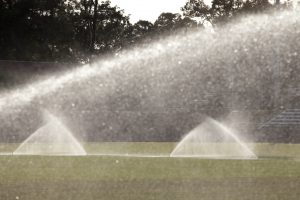
UF/IFAS Photo by Tyler Jones.
Fertilizing
Fertilization is another often misunderstood topic. Grass is a plant, and therefore requires nutrients to thrive. Over doing it in certain grasses may cause them to die back much like improper irrigation. Application rates vary by grass species and are given in terms of required nitrogen per 1000ft2 for a single growing season. You can tell how much Nitrogen a fertilizer has by looking at the first of the three-digit NPK rating. It indicates the amount by weight in the bag (8-8-8 = 0.08lbs nitrogen per 1lb fertilizer). Keep in mind that rate of fertilizer your grass needs is for the entire year. This means you will want to apply multiple times. So, if you need 13lbs of fertilizer it is best to apply about 4.33lbs three times across the growing season versus all at once. Only apply fertilizer during active growth. In the Panhandle this is mid-April through mid-September. Appropriate rates and timing will keep those expensive fertilizers in your root zone and not in our local waterways.
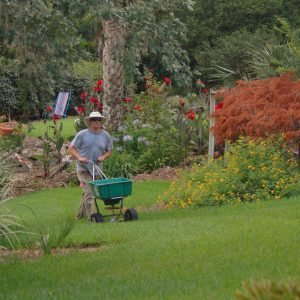
UF/IFAS Photo
Appropriate care will provide lush healthy growth and a full lawn. Taking the time to identify your grasses will inform you as to what it needs to support your family for years to come. Appropriate irrigation and fertilization will in-turn support the health of local watersheds and potentially save you some money and effort. For more information on lawn maintenance, see these Ask IFAS documents, or contact your local extension agent for additional information on this and any topic regarding your gardens and more.
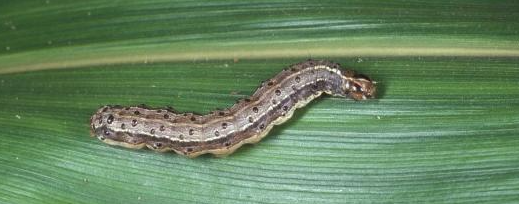
by Sheila Dunning | Nov 4, 2021
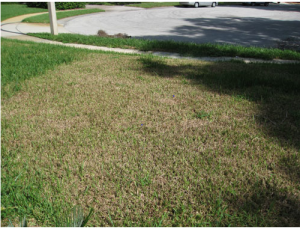
Chewing caterpillar damage on St. Augustinegrass Photo by: Steven Arthurs, UF
Tropical sod webworm larvae are destructive pests of warm season turfgrasses in the southeastern U.S. especially in the fall. Commonly referred to as a worm, they are truly caterpillars, the larvae of a moth. Larval feeding damage reduces turfgrass aesthetics, vigor, photosynthesis and density, which is very evident on finer-bladed grasses such as bermudagrass and zoysiagrass. Feeding damage is possible on all grass types however. Adults, a dull brown colored moth about ¾ inch long, rest in sheltered and shrubby areas during the day and are active at dusk. Females deposit clusters of 10-35 eggs on the upper surface of grass blades. The eggs hatch in 3-4 days and develop from a 1 mm long caterpillar to one over 11 mm long through six instars within 21 to 47 days, depending on temperature. Larval feeding occurs at night, leaving the grass looking ragged, shortened and missing.
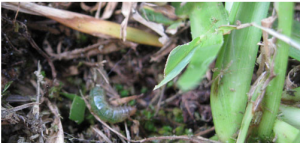
Sod webworm on soil surface
Photo by: Steven Arthurs, UF
Control should be against damaging larvae, not the flying moths. However, insecticidal soap applications to moth harboring areas can reduce re-population frequency. Soil-drenching soap flushes can be used to find the caterpillars, especially in dry and hot grass areas. Bacterial-based insecticides, such as Bt, Bacillus thuringiensis var. kurstaki or Spinosad, will control sod webworm caterpillars without impacting beneficial species as long as they are applied with each flush of grass growth.
Fall armyworms are also active when the weather turns cooler. They feed any time of the day or night, but are most active early in the morning or late in the evening. The 1 ½ inch long gray and white moth lays about 1,000 eggs in multiple masses on any vegetation. Two to 10 days later, the small caterpillar hatches and begins to grow to nearly 2 inches long over a two week period. The fall armyworm is easily recognized by its dark head marked with a distinct pale-colored inverted Y and the long black stripe running along each side of its body. These aggressive feeders “march” rapidly across grassed areas consuming every above-ground plant part. While bacterial-based insecticides will reduce the numbers, control of armyworms usually requires synthetic insecticides.
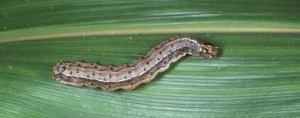
Armyworm
Photo by: Jim Castner, UF
The good news is that grass “worms” can be controlled and the blades will grow back. The damage may be devastating to see, but usually not a permanent problem.

by Ashley Stonecipher | Oct 28, 2021
As October gets by us and November quickly approaches, I would like to include the preparation on What to Plant? And What to Do? Some great annual plant choices are digitalis (foxglove), petunias, and Shasta daisy. There are many daffodil bulb varieties for North Florida including the following: Carlton, Fortune, Silver Charms, Thalia, and Sweetness. We will be getting into more of the cooler days, so this is a good time to start bulb onions and salad crops such as arugula, lettuce, and spinach. Dill, fennel, oregano, and sage are all herbs that can be planted throughout the fall months.
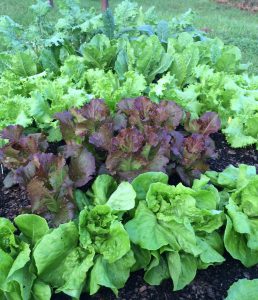
Start preparing now so your fall garden will be full of dark leafy greens, multi-colored lettuces, and root vegetables of all shapes and sizes. Photo by Molly Jameson.
In lawns there are a few key things that can be done in October. It is possible to control winter weeds before they appear. This is the time to use preemergent herbicides when nighttime temperatures are between 55-60 degrees Fahrenheit for four to five days in a row. If a green lawn is desired, you can overseed with annual ryegrass when the daytime temperatures are in the low 70s. Remember, the lawn will still need to be watered and mowed to maintain a healthy ryegrass. Watch for fungus like brown patch and large patch disease. This can become active when the soil temperature is between 65-75 degrees Fahrenheit.
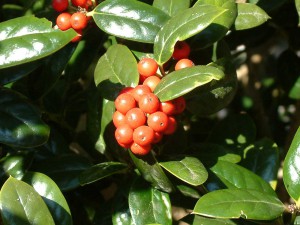
Hollies also attract bees to the landscape.
Credit: Beth Bolles, UF IFAS Extension Escambia County
And last but not least as you prepare for winter around the corner you can plant evergreen hollies that will make it through the cold and provide a splash of color with red berries. Gather pine needles that are dropping and use as a natural mulch, and this is the last month that strawberry plants can be established in a bed or a large container.
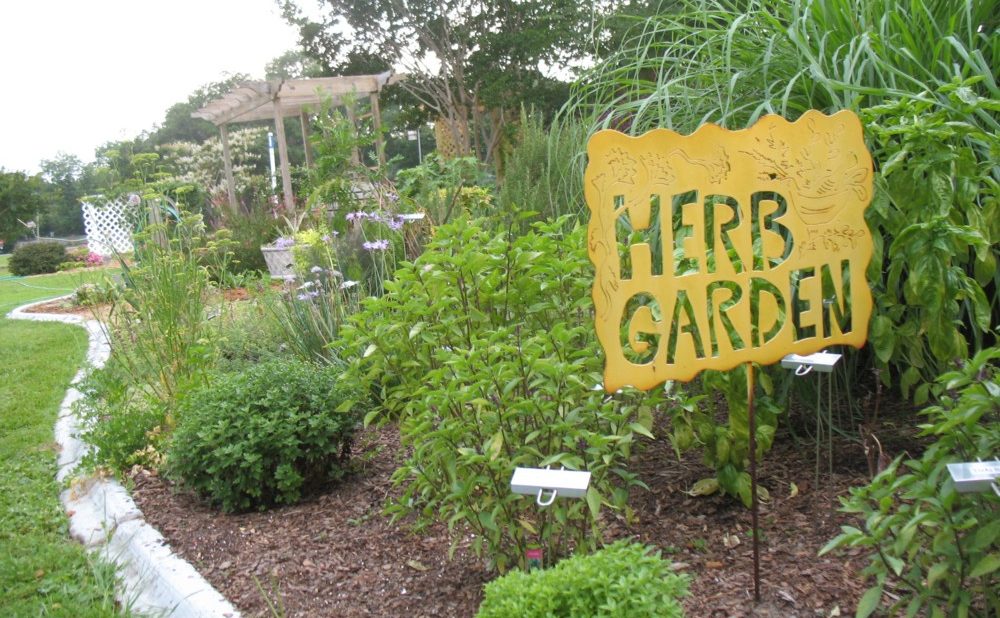
by Ashley Stonecipher | Sep 23, 2021
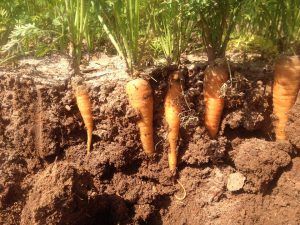
Photo by Full Earth Farm.
Yes, that’s right! We made it through the hottest part of the year and we are looking ahead to fall just around the corner! I am excited to be discussing September and what we can do to prepare for fall in the garden. As the nighttime temperatures start to cool down, we are given many more options.
For annual color plantings in September, try Ageratum, Celosia, Zinnias, and Wax Begonia to add fall color to your landscape. Bulbs will also add color, texture, and pattern to a bed. If you have some extra space, a variety of elephant ears could really accent a bed or you could always go with the classic calla, narcissus or zephyr lily. Popular vegetables to plant in North Florida in September are broccoli, carrot, cabbage, and collards. See Vegetable Gardening in Florida This is also the time of year to establish strawberry plants. Some great herbs to get started are Mexican tarragon, mint, rosemary, and basil.
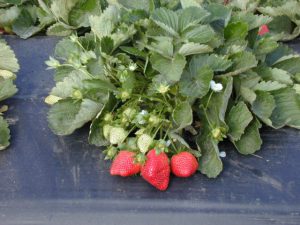
Image Credit: Matthew Orwat UF/IFAS Extension Washington County
There are many things that can be done in your lawn during September. Monitoring your lawn for its health and potential insect pests is important this time of year. Common insects to scout for are fall armyworms, chinch bugs, mole crickets, and sod webworms. The last fertilizer application should be done by the middle to end of September. Make sure you choose a fertilizer with little to no phosphorus unless a soil test shows differently. To maintain a healthy lawn, avoid weed and feed products and only apply herbicides in areas with high infestations of weeds. Weed and feed products are not recommended because the timing of when to fertilize and the timing of the weed killer is not always the same. The best management practice is to use a separate treatment for weeds and when possible spot treat weeds.
If you already have bulbs in your landscape from previous growing seasons, this is the time to divide and replant those that are big. You can also add organic matter to new planting areas. Continue working on your vegetable plants and prepare them for either transplants for a fast start, or plants seeds for more variety. Throughout your landscape, it is important that plants are getting the right amount of water as we go in and out of wet and dry weather this time of year.
October will be here before we know it in just a couple of weeks. Look out for the next article to come. We will be getting into the cooler nights and more options for planting vegetables and herbs!
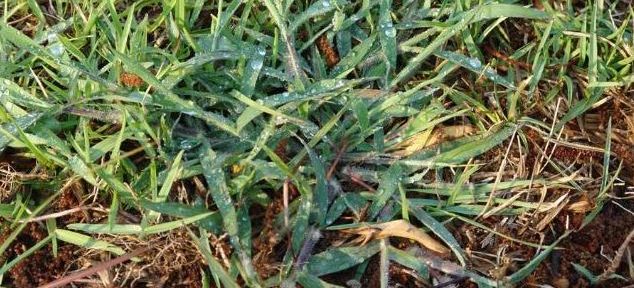
by Larry Williams | Aug 26, 2021
Hot, summer months are not the time to be using most lawn herbicides.
One issue is the heat of summer. Most lawn herbicide labels include statements such as the following.
“Do not apply when temperature exceeds 90°F.” “Do not broadcast apply this product when air temperatures are above 90°F (85°F for St. Augustinegrass) unless temporary turf injury can be tolerated.”
Every year we’ll see lawns that are injured or killed because of lawn herbicides being applied when temperatures are too hot.
Summer is usually a rainy and windy time of the year. Many lawn herbicide labels include statements such as the following.
“Allow 12 hours after application before watering lawn for maximum effectives on listed weeds.” “Apply only when wind is no more than 10 mph.” “Applying this product in calm weather when rain is not predicted for the next 24 hours will help to ensure that wind or rain does not blow or wash pesticide off the treatment area.”
It is critical to read and follow the label directions and precautions for any pesticide you use. Pesticide labels, including herbicides, include the following statements.
“To the extent consistent with applicable law, the buyer assumes all risks of use, storage, or handling of this product not in accordance with label directions.” “It is a violation of Federal law to use this product in a manner inconsistent with its labeling.”
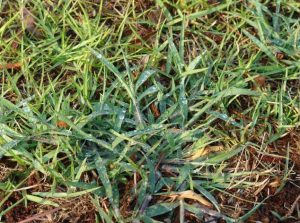
Crabgrass growing in centipedegrass lawn. Photo credit: UF/IFAS Extension
By the time summer arrives, many of the lawn weeds are mature, which means they are well established with extensive root systems. These mature, well established weeds are much more difficult to control. They are more susceptible to herbicides when they are small, young, and not well established. Also, these mature weeds have been allowed to produce countless numbers of seeds as they move into summer. Most weeds are prolific seed producers. For example, a single crabgrass plant (a common summer lawn weed) can produce 150,000 seeds.
Applying a preemergence lawn herbicide in February to help prevent summer annual weeds such as crabgrass or applying a postemergence lawn herbicide during spring while the weather is mild and before the weeds are out of control simply makes more sense than waiting until summer.
The best options now with lawn weed control involve continuing to follow good mowing practices, maybe hand removal of some weeds, and just simply waiting it out until next February and spring to worry with the use of lawn herbicides.
In the meantime, you may want to read the following UF/IFAS Extension publication on lawn weed control.
https://edis.ifas.ufl.edu/pdf/EP/EP14100.pdf
Larry Williams, UF/IFAS

















